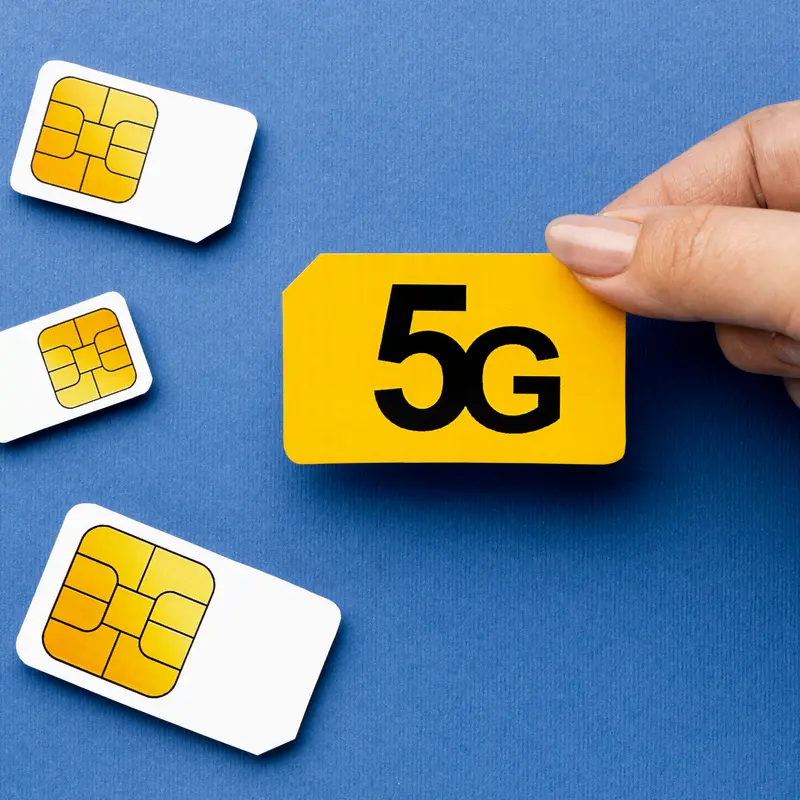How Much Does Telecommunications Cost?
Telecommunications costs can vary significantly, generally ranging from £50 to £300 per month per user, depending on several factors such as plan features, internet speed, and provider.
| Features | Basic Plan (£50) | Standard Plan (£150) | Premium Plan (£300) |
|---|---|---|---|
| Internet Speed | 50 Mbps | 150 Mbps | 500 Mbps |
| Voice Calls | Limited Minutes | Unlimited Calls | Unlimited Calls |
| Data Cap | 100 GB | 500 GB | Unlimited |
| Extra Features | None | Basic Support | Advanced Support & Security |
Factors influencing the cost include the provider, geographical region, extra services like international calls, and data usage. Always compare different plans and providers to find the best fit for your requirements.
What are the main types of telecommunications services?
Telecommunications services include phone, internet, television, radio, and data transmission.
- Phone: Traditional landline and mobile services.
- Internet: DSL, cable, fibre optics, and satellite.
- Television: Cable, satellite, and streaming services.
- Radio: AM, FM, and satellite radio.
- Data Transmission: Secure and reliable data transfer services.
These services differ in technology, coverage, and user experience, catering to various communication needs.
How much does mobile phone service cost?
Mobile phone service costs typically range from £30 to £100 per month, depending on various factors such as provider, data plan, and additional features.
Pros and Cons:
- Pros:
- Basic plans can be very affordable.
- Special discounts and family plans can reduce costs.
- Higher-priced plans often include more data and better service features.
- Cons:
- High costs for unlimited data plans.
- Contract plans can be restrictive.
- Overuse fees may apply if you exceed your plan’s limits.
Factors Influencing Cost:
- Provider: Major carriers vs. MVNOs (Mobile Virtual Network Operators).
- Data Plan: Amount of data included, from limited to unlimited.
- Features: Additional services like international calling, premium streaming.
- Contract Length: Month-to-month vs. annual contracts.
How much does home internet service cost?
Home internet service costs can range from £20 to £100 per month. The price varies based on factors such as connection type (DSL, cable, fibre), speed, data caps, and additional features like Wi-Fi equipment. Promotions and bundling with other services can also influence costs.
How much does business internet service cost?
Business internet service can cost anywhere from £50 to £500+ per month, depending on the speed of the connection, the type of service (DSL, cable, fibre, etc.), and additional features like dedicated customer support or enhanced security.
| Internet Type | Speed Range | Estimated Cost |
|---|---|---|
| DSL | 1-100 Mbps | £50 – £200/month |
| Cable | 25-500 Mbps | £100 – £250/month |
| Fibre | 50-1000+ Mbps | £150 – £500+/month |
Factors Influencing Cost:
- Speed requirements
- Geographic location
- Type of service (DSL, cable, fibre)
- Additional features or services (support, security, etc.)
How much does landline phone service cost?
Landline phone service typically costs between £20 to £60 per month, depending on the provider and plan features.
What factors influence telecommunications costs?
Factors influencing telecommunications costs include infrastructure investment, regulatory environment, technological advancements, market competition, and service demand.
- Infrastructure investment: Costs vary based on network setup and maintenance.
- Regulatory environment: Government policies can affect pricing.
- Technological advancements: Upgrading to newer tech often involves significant costs.
- Market competition: More competitors can drive prices down.
- Service demand: Higher demand can lead to reduced per-unit costs.
Each of these factors adds complexity and variability to telecommunications pricing, making it essential to carefully examine them for effective cost management.
How does service provider choice affect cost?
Choosing a service provider can significantly impact costs based on their pricing structure, expertise, and included services.
Pros and Cons of Service Providers:
| Pros | Cons |
|---|---|
| Better expertise may lead to higher quality | Higher cost for premium services |
| Comprehensive packages save time and effort | Some providers may have hidden fees |
Factors Influencing Cost:
- Experience and reputation
- Scope of services offered
- Location and market demand
- Additional features and support options
How do data and usage limits impact cost?
Data and usage limits directly impact costs by determining overage fees or requiring the selection of higher-priced plans.
Pros of Data and Usage Limits:
- Lower base cost for light users
- Predictable budgeting for specific data usage
Cons of Data and Usage Limits:
- Overage charges for exceeding limits
- May require more expensive plans for heavy users
How do contract terms influence cost?
Contract terms can significantly influence cost by defining payment schedules, penalties, project scope, and material quality, among other factors. Understanding and negotiating these terms meticulously can help manage and potentially lower costs.
How do additional features and services affect cost?
Additional features and services can significantly impact costs, including custom designs, premium materials, and enhanced support options.
| Feature/Service | Pros | Cons |
|---|---|---|
| Custom Designs | Unique aesthetic appeal | Higher installation and material costs |
| Premium Materials | Increased durability and visual quality | Expensive |
| Underfloor Heating | Added comfort and luxury | Considerable installation and operational costs |
Factors like labour rates, geographic location, and the complexity of installation also significantly influence costs.
How can you reduce telecommunications costs?
You can reduce telecommunications costs by analysing your current usage, consolidating services, implementing VoIP technology, and negotiating better rates with providers.
- Analyze Usage: Review current telecom usage to identify unnecessary services and overages.
- Consolidate Services: Combine multiple services under a single provider for discounts.
- Implement VoIP: Use Voice over Internet Protocol (VoIP) to save on long-distance and international calling fees.
- Negotiate Rates: Contact your telecom provider to negotiate lower rates based on your usage patterns.
Pros and Cons Table:
| Step | Pros | Cons |
|---|---|---|
| Analyze Usage | Identifies cost-saving opportunities | Time-consuming |
| Consolidate Services | Simplifies billing, potential discounts | Limited provider options |
| Implement VoIP | Lower call costs, advanced features | Requires reliable internet connection |
| Negotiate Rates | Potential for significant savings | Potential initial pushback from providers |
Are there cheaper alternatives to traditional services?
Yes, there are cheaper alternatives to traditional services.
Pros:
- Cost-effective
- Accessible to more users
Cons:
- Might offer limited features
- Quality may vary
Factors influencing this include the type of service, provider reputation, and customer reviews.
How can bundling services save money?
Bundling services can save you money by combining multiple services into one package at a reduced rate.
- Reduced overall cost compared to purchasing services separately
- Simplified billing process
- Potential for extra perks and discounts
By opting for a bundled package, you can enjoy cost savings and added convenience, although it’s essential to ensure the bundled services meet all your specific needs.
Pros and Cons of Bundling Services:
| Pros | Cons |
|---|---|
| Overall cost savings | Possible inclusion of unwanted services |
| Simplified billing | Less flexibility in service choices |
| Additional discounts and perks | Can be challenging to switch providers |
How can negotiating with providers lower costs?
Negotiating with providers can lower costs by directly securing better rates and terms for services.
- Volume Discounts: Providers may offer discounts for committing to high volumes.
- Bundled Services: Negotiating for bundled services can reduce individual costs.
- Fixed Pricing: Fixed pricing agreements can prevent unexpected costs.
By implementing these strategies, organizations can achieve significant savings and better budget control over their expenditures.
Are there discounts or promotions available?
Yes, there are often discounts or promotions available, but these can vary and may be time-sensitive. Check with the retailer for current offers.
What are the costs of international telecommunications?
The costs of international telecommunications vary depending on the service provider, country, call type, and duration. Below is a table highlighting average rates for several providers:
| Provider | Country | Cost per Minute | Call Type |
|---|---|---|---|
| AT&T | United Kingdom | £0.09 | Landline |
| Verizon | Canada | £0.05 | Mobile |
| T-Mobile | Mexico | £0.10 | Landline |
| Sprint | Germany | £0.15 | Mobile |
How much do international calls cost?
International call costs range from £0.01 to £3.00 per minute depending on the country and provider. Factors influencing these costs include the destination country, time of day, and whether the call is made from a landline or mobile phone.
How much does international roaming cost?
International roaming costs typically range from £5 to £10 per day depending on the carrier, destination, and data usage plan.
Are there cost-effective options for international communication?
Yes, there are several cost-effective options for international communication such as VoIP services, messaging apps, and international calling cards.
| Option | Pros | Cons | Price Range |
|---|---|---|---|
| VoIP Services | Cheap rates, internet-based | Requires internet access | £0.01 – £0.10 per minute |
| Messaging Apps | Often free, supports text/video calls | Limited to users on the same app | Free – £10 per month (premium plans) |
| International Calling Cards | Good rates, easy to use | Hidden fees, limited to minutes purchased | £5 – £50 per card |
What are the hidden costs in telecommunications?
Hidden costs in telecommunications often include setup fees, long-term contract penalties, charges for exceeding usage limits, and equipment rental fees. These costs can significantly increase overall expenses.
| Pros | Cons |
|---|---|
| You get a detailed breakdown | Can be complex and not always transparent |
| Advanced features may be included | Extra charges for exceeding usage limits can add up |
| Multi-device compatibility | Early termination fees can be steep |
| Promotional offers available | Promotional rates often increase after the first term |
| Customization options | Equipment rental fees may not be obvious during purchase |
Are there activation or installation fees?
Yes, there are activation and installation fees, typically ranging from £50 to £100, depending on the service provider.
Are there early termination fees?
Yes, early termination fees may apply depending on the terms of the service contract, which typically outlines the specific amount and conditions.
Are there equipment rental or purchase costs?
Yes, there are equipment rental or purchase costs, typically ranging from £50 to £500 depending on the type and quality of the equipment.
| Pros of Renting Equipment | Cons of Renting Equipment |
|---|---|
| Lower initial cost | Ongoing rental fees |
| No maintenance required | Limited availability |
| Pros of Purchasing Equipment | Cons of Purchasing Equipment |
|---|---|
| Long-term cost savings | Higher initial expense |
| Full ownership and control | Maintenance responsibility |
Are there taxes and regulatory fees?
Yes, taxes and regulatory fees may be applicable depending on the location and type of service or product being offered.
How do telecommunications costs compare globally?
Telecommunications costs vary significantly across different regions and are influenced by factors such as economic conditions, regulatory policies, and market competition. To understand these differences better, consider the following table comparing the average monthly mobile phone costs in select countries:
| Country | Average Monthly Cost (GBP) | Pros | Cons |
|---|---|---|---|
| United States | £70 | High-quality service, widespread coverage | Expensive plans |
| United Kingdom | £35 | Competitive prices, good coverage | Moderate data speed |
| India | £3 | Highly affordable | Variable service quality |
| Australia | £45 | Stable networks, good customer service | Higher costs than neighbouring regions |
| Germany | £30 | Reliable service, multiple provider options | Relatively expensive for high data usage |
What factors influence telecommunications costs globally?
- Economic Conditions: Wealthier countries tend to have higher telecommunications costs due to higher wages and operational costs.
- Regulatory Policies: Governments may impose taxes or subsidies that affect pricing.
- Market Competition: More competition among service providers generally leads to lower prices.
- Technological Infrastructure: Advanced infrastructure can lead to better service but higher costs for implementation and maintenance.
- Consumer Demand: Regions with higher demand may see varying price adjustments based on usage trends.
How do UK telecommunications costs compare to the US?
When comparing telecommunications costs between the UK and the US, several factors should be considered, including mobile phone plans, broadband prices, and service quality.
Comparison Table of Telecommunications Costs
| Feature | UK | US |
|---|---|---|
| Mobile Phone Plans | Generally cheaper, more competitive | Higher costs, variable depending on carrier |
| Broadband Prices | Lower on average, better value for money | Higher on average, varies by state |
| Service Quality | High, widespread coverage | High, but rural areas may have limited access |
Pros and Cons of UK vs. US Telecommunications Costs
| Aspect | UK | US |
|---|---|---|
| Pros | Cheaper mobile plans and broadband | High service quality in urban areas |
| Competitive market driving down prices | Wide variety of carrier options | |
| Cons | Some areas still have coverage issues | Higher overall costs |
| Less variety in premium service packages | Rural areas often underserved |
Factors Influencing Differences
- Market Competition: The UK has a highly competitive telecommunications market driving down prices, while the US market is dominated by a few major players.
- Geography: The US has vast rural areas making coverage expensive, affecting pricing.
- Regulation: UK regulatory bodies frequently intervene to keep prices low.
How do UK telecommunications costs compare to Europe?
UK telecommunications costs vary widely compared to other European countries. On average, the UK tends to have higher costs for broadband and mobile services.
| Factor | UK | Europe |
|---|---|---|
| Average Monthly Broadband Cost | £35 | £30 |
| Average Monthly Mobile Plan Cost | £20 | £15 |
| Infrastructure Quality | High | Varies |
| Market Competition | Moderate | High |
| Regulatory Policies | Stricter | Flexible |
Pros: High-quality infrastructure and stricter regulations ensuring service standards.
Cons: Higher costs for consumers and moderate competition limits price reduction.
What are the future trends in telecommunications costs?
Telecommunications costs are influenced by technological advancements, regulatory changes, market competition, and consumer demand. Key trends shaping costs include:
- Technological Advancements: The rollout of 5G may lead to higher initial costs but reduced long-term operational expenses.
- Regulatory Changes: Policies encouraging competition can drive down costs.
- Market Competition: Increased competition can lead to price wars, benefitting consumers.
- Consumer Demand: Growing demand for high-speed internet can drive investments in infrastructure.
Pros and Cons
| Pros | Cons |
|---|---|
| Technological advancements can reduce long-term costs and improve service quality. | Initial investment costs for new technologies like 5G can be high. |
| Increased competition can lead to lower prices for consumers. | Price wars may reduce profitability for providers, affecting service quality. |
| Regulatory changes can encourage fair pricing and investment in infrastructure. | The uncertain regulatory environment can create risks for providers. |
| Advances in satellite and fibre-optic technology can improve connectivity. | Rural areas may still face higher costs due to challenging infrastructure deployment. |
How will 5G impact telecommunications costs?
5G is expected to impact costs by increasing initial infrastructure investments while potentially reducing long-term operational expenses.
Pros:
- Enhanced energy efficiency
- Increased automation reducing labour costs
- Potential for higher revenue from new services
Cons:
- High initial infrastructure investment
- Maintenance costs for new technology
- Possible increase in consumer costs during rollout
Factors Influencing Costs:
- Infrastructure Investment: The extensive rollout of new equipment will be a major expense.
- Energy Efficiency: 5G is designed to be more energy-efficient, potentially lowering operational costs.
- Consumer Adoption Rates: Rapid adoption could offset initial costs more quickly.
How will advancements in technology affect costs?
Advancements in technology can reduce costs significantly by increasing production efficiency and lowering overheads.
Will competition among providers lower costs?
Yes, competition among providers can lower costs. Multiple providers often strive to offer better services at lower prices to attract customers.
| Pros | Cons |
|---|---|
| Lower prices due to competitive pressure | Potential for reduced service quality |
| Increased choices for consumers | Possible market monopolies in the long run |
| Encourages innovation and efficiency | Short-term price wars can harm smaller providers |
How will regulatory changes impact costs?
Regulatory changes can significantly impact costs by enforcing new compliance standards. Variations depend on industry type, scale of operations, and specific regulatory requirements.
Conclusion
- Engineered wood floors are versatile and easy to install.
- Solid hardwood floors offer unmatched durability and longevity.
- Bamboo flooring is eco-friendly and highly renewable.
- Laminate flooring is cost-effective and resistant to scratches.
- Parquet flooring gives a timeless, decorative look.
- Cork flooring is comfortable, with good insulation properties.
In this article, we explored various wood flooring types, including engineered wood, solid hardwood, bamboo, laminate, parquet, and cork floors. Each type has unique attributes, from ease of installation to durability and aesthetic appeal. Understanding these features helps in selecting the appropriate flooring for your needs.




